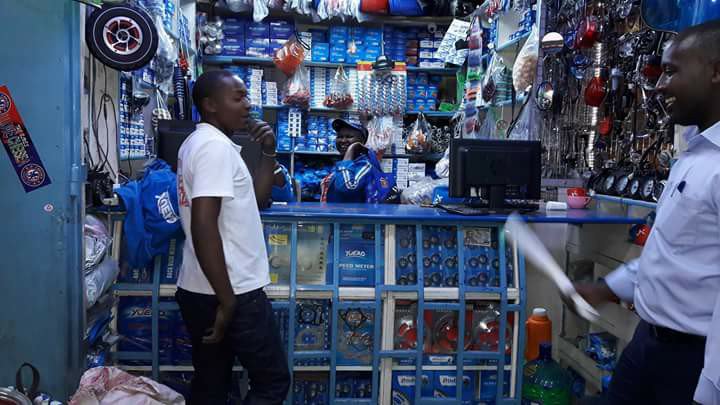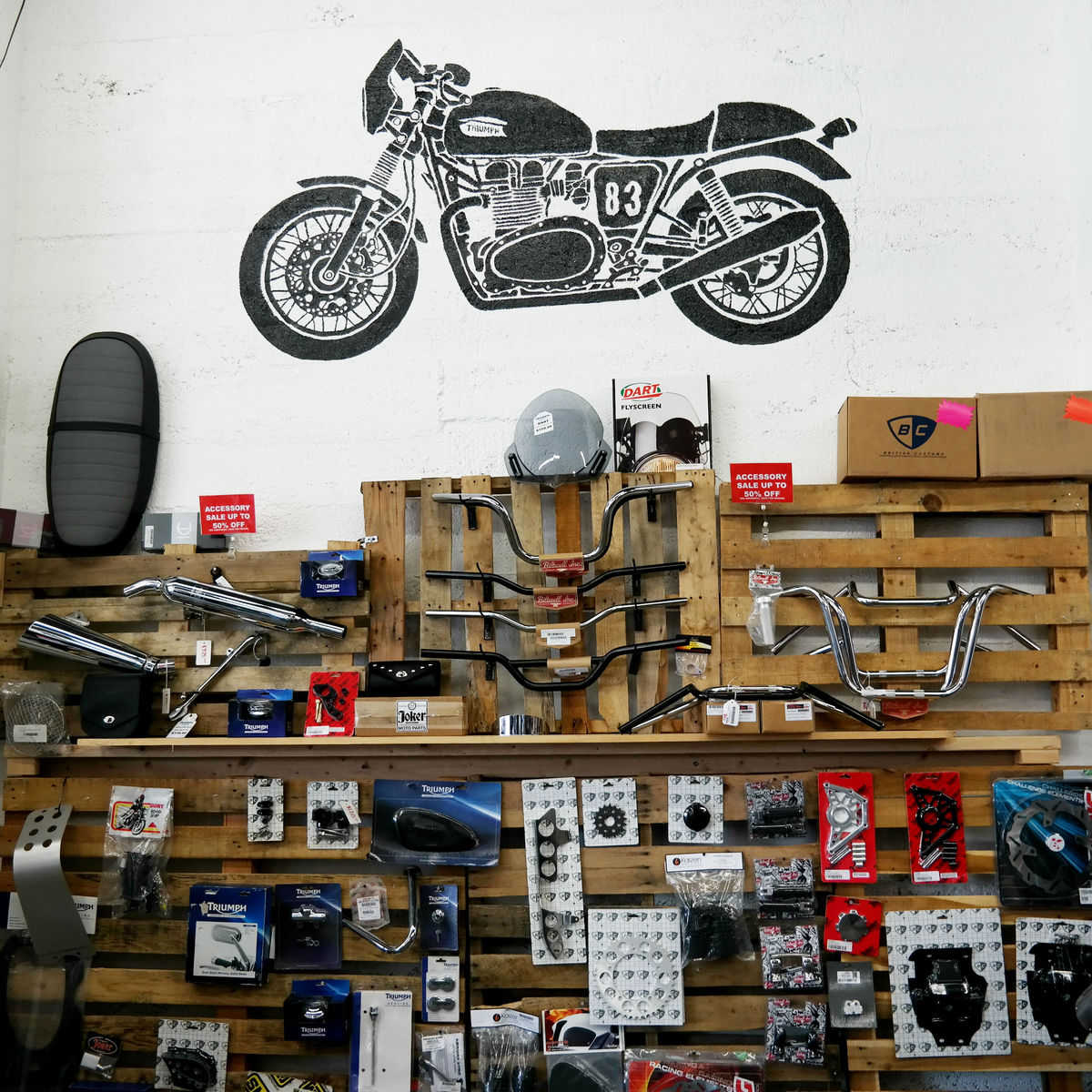Discover Affordable Costs on Motocross Parts NZ for every single Bike
Discover Affordable Costs on Motocross Parts NZ for every single Bike
Blog Article
Comprehending the Necessary Components of a Motorcycle: A Comprehensive Guide for Lovers
For bike lovers looking to elevate their riding experience and ensure their bikes run efficiently, comprehending the necessary elements of a motorcycle is critical. Each component, from the engine's intricate workings to the essential duty of the stopping devices, not only impacts performance however additionally safety and security and comfort. This overview will certainly go through the basic components that every cyclist must be acquainted with, enabling educated options in both maintenance and prospective upgrades. As we begin this expedition, one must ask: how does each element interact to produce the seamless adventure every fanatic looks for?
Engine Components

The camshaft plays a crucial role in controlling the timing of the engine's shutoffs, making certain the precise opening and closing required for efficient gas and air intake, along with exhaust expulsion. This timing is vital to maintaining optimal engine performance and performance. In addition, the carburetor or fuel injection system, depending on the motorbike design, is in charge of mixing air with gas in the appropriate proportion for combustion.
The cooling system, either air or liquid-based, functions to keep the engine's temperature within operational limitations, preventing getting too hot and guaranteeing longevity - motocross gear. Each component, carefully developed and incorporated, adds to the seamless operation of the engine, specifying the motorbike's power result and total performance
Transmission System
Integral to the bike's functionality, the transmission system makes certain reliable power transfer from the engine to the wheels. This system comprises a number of important elements, including the clutch, gearbox, and final drive, each playing a crucial function in equating the engine's power right into motion. The clutch, commonly operated by a hand bar, serves to disengage the engine and engage from the transmission, permitting smooth gear adjustments and controlled velocity.
The transmission, frequently described as the transmission correct, contains a collection of gears that bikers can manually move with to adjust the bike's rate and torque result. These equipments are prepared in a series that makes it possible for the bike to accelerate smoothly and maintain optimal engine performance throughout different speeds. Most motorcycles utilize a consecutive transmission, requiring the rider to move gears in a fixed order.
Braking Mechanisms
While comprehending the transmission system is key to taking advantage of a motorcycle's power, similarly essential is the ability to manage and stop that power effectively, which is where braking devices enter play. Brakes are crucial for safety and security and performance, providing the rider with the essential control to browse numerous terrains and conditions. Normally, motorbikes feature two kinds of stopping systems: disc brakes and drum brakes.
Disc brakes are a lot more prevalent in modern bikes because of their superior efficiency. They contain a brake disc, caliper, and pads. When activated, the caliper squeezes the brake pads against the spinning disc, converting kinetic energy into warmth, thereby slowing down the wheel. This system provides better warm dissipation, constant efficiency, and improved stopping power, particularly in damp conditions.
Conversely, drum brakes, though much less common, are still found in some motorbikes. They function by pressing brake footwear versus the internal surface area of a drum attached to the wheel. While usually much less efficient in warmth dissipation and quiting power, drum brakes are less complex and a lot more cost-effective.
Comprehending these braking systems' nuances enables motorcyclists to black and pink motorcycle helmet maintain their motorbikes correctly and appreciate the engineering that makes sure secure and reliable stopping.
Suspension and Steering
Suspension and guiding systems are essential components that considerably affect a motorcycle's handling and adventure comfort. The suspension system, being composed of forks at the front and shock absorbers at the back, soaks up roadway irregularities, improving stability and control. Front forks, usually telescopic or upside down, compress and rebound to reduce effects, while back shock absorbers keep tire contact with the roadway, crucial for traction and security.
Guiding, centered around the handlebars, connects the biker to the bike's directional control. The steering head bearings guarantee smooth operation, permitting specific ability to move. Correct alignment and upkeep of these bearings are vital for foreseeable steering response and minimizing biker exhaustion.
The suspension's adjustability is another important aspect; preload, damping, and rebound setups allow modification to match different riding conditions and styles. This versatility is essential for enhancing efficiency, whether navigating urban roads or taking on tough trails. Innovations like digital shock absorber provide real-time modifications, boosting experience high quality across diverse surfaces.

Electrical Solutions
After making certain a controlled and smooth experience through effective suspension and guiding systems, focus transforms to the electrical systems, an essential facet of modern-day motorbikes. These systems play an important duty not just in starting the engine but additionally in powering you could look here various components that improve the performance and safety of the motorbike.
At the heart of a motorbike's electrical system is the battery, which shops electrical power needed for starting the engine and powering auxiliary systems - motorbike shop. The generator or generator, coupled with the rectifier-regulator, guarantees the battery continues to be billed while the motorbike is in procedure, transforming power into electric energy and preserving voltage levels
The ignition system, another essential component, is in charge of stiring up the air-fuel blend in the engine's cyndrical tubes. Modern bikes usually utilize a digital ignition system, using greater effectiveness and integrity contrasted to conventional systems.
Lights systems, including headlights, tail lights, and indications, are likewise essential, making certain presence and safety for the rider. Extra electronic parts such as sensors, control devices, and shows contribute to sophisticated attributes like fuel shot administration, anti-lock braking systems (ABS), and electronic dashboards, even more improving the riding experience.
Final Thought
A detailed comprehension of a motorcycle's important parts, including the engine, transmission system, stopping mechanisms, suspension, guiding, and electrical systems, is indispensable for fanatics aiming to optimize performance, safety, and convenience. Proficiency of these components enables educated decisions regarding upkeep and upgrades, ultimately boosting the riding experience. By incorporating this knowledge, motorcyclists can guarantee their bikes run at peak effectiveness and integrity, therefore making best use of both enjoyment and long life of their cars.
For motorbike enthusiasts looking to raise their riding experience and guarantee their bikes run smoothly, comprehending the crucial parts of a bike is paramount.Integral to the bike's performance, the transmission system makes sure reliable power transfer from the engine to the wheels.While comprehending the transmission system is vital to utilizing a bike's power, just as vital is the capability to manage and quit that power successfully, which check these guys out is where stopping mechanisms come into play. Normally, motorcycles feature 2 kinds of stopping systems: disc brakes and drum brakes.
An extensive understanding of a bike's necessary parts, including the engine, transmission system, braking mechanisms, suspension, steering, and electric systems, is indispensable for enthusiasts intending to maximize security, comfort, and performance.
Report this page